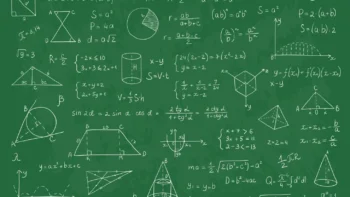Reading Time: 10 Minutes
The SAT Math section is one of the most important parts of the exam, requiring a solid grasp of algebra, geometry, advanced math, and data analysis. Understanding these concepts and knowing how to apply them to solve problems can significantly boost your SAT score.
In this guide, we’ll break down the key mathematical concepts tested in the SAT and provide you with practical problem-solving techniques. You’ll also find realistic examples that mirror the kind of questions you’ll face in the exam.
Key SAT Math Concepts
The SAT Math is split into two sections: one that allows calculator use and one that does not. However, both sections test the same fundamental math concepts:
Heart of Algebra: This covers linear equations, inequalities, and systems of equations. You need to be comfortable manipulating equations, graphing them, and solving for variables.
Problem Solving and Data Analysis: This focuses on interpreting and analyzing data from graphs, charts, and tables. It includes ratios, percentages, and probability.
Passport to Advanced Math: This includes quadratic equations, exponential functions, and polynomials. Mastering this area is essential for high-level math questions.
Additional Topics: Topics such as geometry, trigonometry, and the properties of circles and triangles are also tested, but to a lesser extent.
Get Your Digital SAT Score in Just 40 Minutes—Absolutely Free!
Problem-Solving Techniques for SAT Math
Let’s dive into some of the most effective techniques that will help you tackle SAT math problems with confidence:
1. Use Substitution and Elimination for Systems of Equations
Systems of equations can appear complex, but solving them is easy when you know how to use substitution or elimination.
Example 1:
Solve the following system of equations:
3x + 2y = 16
x − y = 3
Solution:
Using substitution, solve the second equation for x:
x = y + 3
Now substitute this into the first equation:
3(y + 3) + 2y = 16
3y + 9 + 2y = 16
5y + 9 = 16
5y = 7
y = 7/5
Now substitute y=7/5 back into x = y + 3
x=7/5 + 3 = 7/5 + 15/5 = 22/5
Thus, x=22/5 and y = 7/5
This example shows how to apply substitution, a fundamental technique for solving systems of equations efficiently.
2. Use Proportions in Geometry
Many geometry problems on the SAT can be solved using proportions, particularly in problems involving similar triangles and scaling figures.
Example 2:
A right triangle has legs of length 6 and 8. A second triangle is similar to the first, and the shortest leg of the second triangle is 9. What is the length of the hypotenuse of the second triangle?
Solution:
First, calculate the hypotenuse of the first triangle using the Pythagorean theorem:
62 + 82 = c2
36 + 64 = 100
c = 10
Now, since the triangles are similar, the sides are proportional. Let X be the hypotenuse of the second triangle.
6/9 = 10/x
Cross-multiply:
6x = 90
x = 90/6
x = 15
Thus, the hypotenuse of the second triangle is 15.
3. Understand Quadratic Equations
Quadratics are a common feature of SAT Math. Whether you’re solving by factoring, using the quadratic formula, or completing the square, it’s essential to be comfortable with all methods.
Example 3:
Solve x2 − 5x + 6 = 0
Solution:
This quadratic can be factored:
(x−2) (x−3) = 0
Setting each factor equal to zero:
x − 2 = 0 ⇒ x = 2
x − 3 = 0 ⇒ x = 3
Thus, the solutions are x = 2 and x = 3.
Prepare for the SAT with Precision—Examily's AI-Powered Tools Help You Shine!
Problem Solving and Data Analysis: Working with Graphs
This section often requires interpreting data from charts, tables, and graphs. Let’s take a look at how you can tackle these problems.
4. Use Ratios and Percentages
Example 4:
A survey shows that 60% of students prefer online SAT prep, and 40% prefer in-person tutoring. If 300 students participated in the survey, how many students prefer in-person tutoring?
Solution:
Calculate 40% of 300:
300×0.40=120.
Thus, 120 students prefer in-person tutoring.
5. Work with Linear Relationships in Word Problems
Many SAT Math questions involve setting up equations based on real-world scenarios.
Example 5:
The cost C of renting a car is $50 per day plus $0.20 per mile driven. If you rent a car for 3 days and drive 150 miles, what is the total cost?
Solution:
The total cost is the sum of the daily rental cost and the cost for the miles driven.
Daily rental cost:
50 × 3 = 150
Cost for miles driven:
0.20 × 150 = 30
Total cost:
150 + 30 = 180
Thus, the total cost is $180.
Tips for SAT Math Success
Practice under timed conditions: Use online SAT question banks and practice tests to simulate real exam scenarios. This will help you improve your speed and accuracy.
Master foundational concepts: A solid understanding of algebra, geometry, and data analysis is crucial. Review formulas and common problem types frequently.
Target your weaknesses: Use performance reports from online platforms like Examily to identify areas for improvement and focus on those during your preparation.






